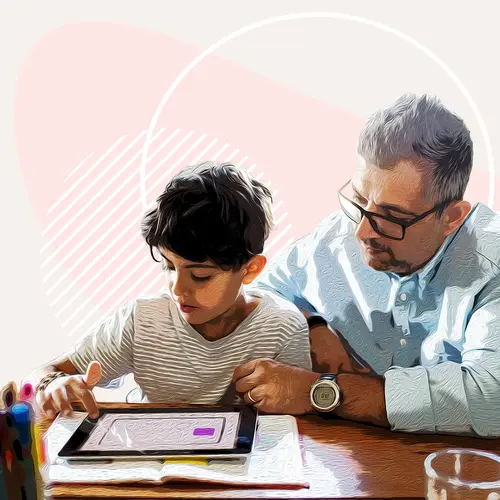Why do some children with attention deficit hyperactivity disorder (ADHD) seem so drawn to video games? Will playing trigger or worsen ADHD symptoms like inattention? What exactly is the connection between video games and ADHD?
What the Research Says
First, there’s no evidence that video games cause ADHD. And one large study from Norway that for several years tracked the gaming habits of kids, starting at age 6, found that those who had more ADHD symptoms tended to play more as they got older. But the sheer amount of screen time did not worsen their condition.
Researchers have several ideas about why video games might have such a strong pull on some kids and youths with ADHD.
Stimulation. Video games offer instant rewards, are generally fast-paced, and are visually exciting. The games could be a way for the child to master a skill on their own terms, escape reality, and feel better about themselves.
Social connections.Kids with ADHD sometimes have trouble forming relationships. Online games allow them a way to make and keep friends.
Hyperfocus. This is the ability to super focus on things that are enjoyable or interesting. It can be a hallmark ADHD symptom in some people. Your child may be so fixated on the game that they may not even hear you shouting their name.
Benefits of Video Games
For children with ADHD, online games can be more than just recreation. The games can help them build important skills. These include:
- Visual-spatial skills
- Hand-eye coordination
- Strategy and problem-solving
- Planning, sequencing, and prioritizing
- Collaboration and teamwork
- Time management
If your child plays, help make sure the games are right for their age. Some games meant for older kids or adults can be too violent or have sexual content. Rating categories range from E (everyone) to AO (adults only -- 18 years and older).
Good choices might include games that require finding material to build virtual shelters or carts and other contraptions to carry characters to their destinations. Children can hone their organization planning, sharpen their working memory, and pick up other valuable skills they may lack.
In 2020, the FDA approved the first prescription digital game as therapy for ADHD. EndeavorRx is for youths aged 8-12. It’s mainly for those who have the inattentive or inattentive-hyperactive type of the disorder. It’s meant to be used as part of treatment that may include medication and behavioral therapy.
EndeavorRx sends players zooming through different landscapes, including a lava river and an icy winter wonderland. Kids tap the screen to pick up targets along the way. One study funded by EndeavorRx’s maker showed the game helped improve attention.
Warning Signs
Some kids with ADHD can spend too much time in front of video games. Work with your child to agree on rules about how long and when they can play. Also, be careful the video games aren’t replacing other activities kids should have, like social interactions, time with family, physical activity, etc. Make sure homework and household chores are done before they pick up the controller or tablet.
Signs that your child needs to ease off the games include:
- Fits or tantrums when asked to stop playing
- Outbursts when losing
- Staying up all night or very late playing
- Lies about how much time is spent gaming
Gaming releases dopamine, the same brain chemical that can get you hooked on things like alcohol or other drugs. Signs your child’s gaming habits may be harmful include:
- Spending less time with family and friends and more time alone with the game
- Obsessive thoughts about gaming
- Poor grades
- Loss of interest in other activities they once enjoyed
If you think your child’s gaming is a problem, talk to your pediatrician or a mental health professional.

